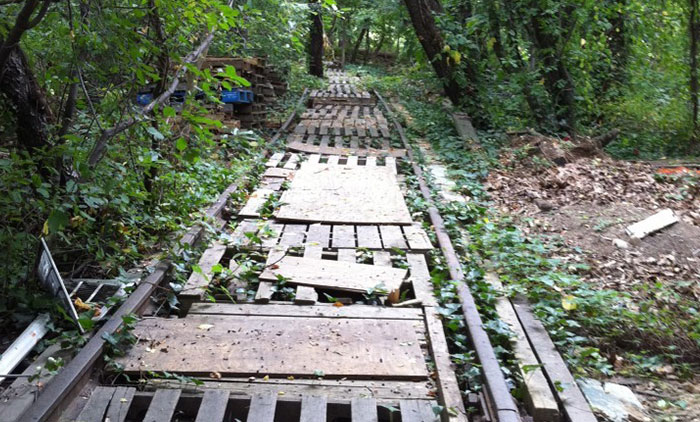File Photo
The QueensWay and QueensRail plans could qualify for the funding.
By Michael V. Cusenza
Governor Andrew Cuomo on Friday announced the availability of $100 million in federal transportation funding to support a range of projects, including the construction of pedestrian and bicycle facilities, recreational trails, and safe routes to schools, to community improvements such as historic preservation and projects that reduce congestion and gas emissions.
The funds, made available to the State through the Federal Highway Administration and administered by the State Department of Transportation, are provided through the Transportation Alternatives Program and the Congestion Mitigation and Air Quality Improvement Program. The programs will provide up to 80 percent of project-related cost, with the remaining 20 percent provided by project sponsors.
According to the State, projects will be selected through a competitive solicitation process that rates proposals based on criteria that includes public benefit, air quality improvement, and finance or delivery innovation. Selected projects will also help municipalities meet the requirements of the Clean Air Act and the Americans with a Disabilities Act, Cuomo noted.
Projects must be related to the surface transportation system and provide full access to the public, State officials said. Applications for funding may be developed by any municipality or non-profit incorporated group. Projects must be sponsored either by a municipality, a state agency, or public authority eligible to administer federal transportation funds.
Eligible project activities include:
• The addition of accessible sidewalks;
• Construction of new bicycle and pedestrian facilities;
• Preservation and conversion of abandoned railroad
corridors for trail use;
• Enhancement of traffic signals or intersections that
improve traffic flow; and
• Establishment of travel demand programs that shift traffic demand to non-peak hours or other transportation modes.
“Preservation and conversion of abandoned railroad corridors for trail use” might sound familiar to some readers because it succinctly sums up the purpose of the proposed QueensWay. The project involves converting the long-abandoned Rockaway Beach Rail Line of the Long Island Rail Road—a 3.5-mile, 47-acre swath of the borough, from Rego Park to Ozone Park—into a $120 million public park, similar to the Highline in Chelsea, boasting trails and amenities.
Additionally, “Establishment of travel demand programs that shift traffic demand to non-peak hours or other transportation modes” could describe the proposed QueensRail. Proponents of the project are devoted to the reactivation of the Rockaway Beach Rail Line either as part of the Long Island Rail Road or, more likely, the City subway system. The defunct spur was put into service in the late 19th Century under the control of the LIRR and connected Rockaway and southern Queens with Rego Park, provided area residents with expedient access to other parts of the city, and 40-minute commutes to Midtown Manhattan from the Rockaway Peninsula. In the early 1960s, parts of the railroad service were condensed, sectioned off, and it eventually closed in 1962.
The Metropolitan Transportation Authority is currently conducting a comprehensive feasibility study of the reactivation of the RBRL.
“By securing this federal funding and making it available to our local communities, we can help ensure that New York will continue to attract businesses, generate new jobs and encourage economic activity while helping meet our goal of a cleaner, greener and safer Empire State for all,” Cuomo said.

